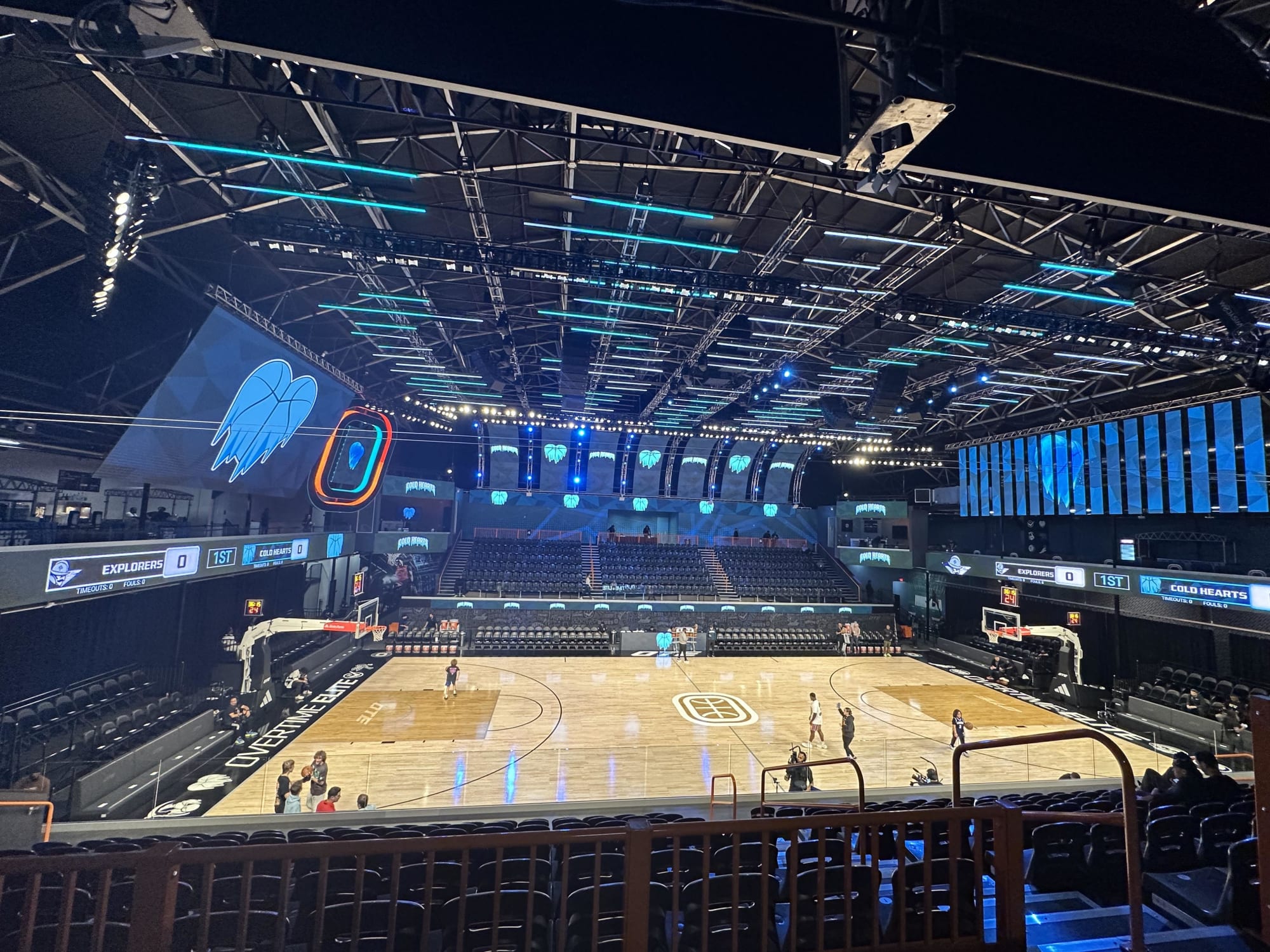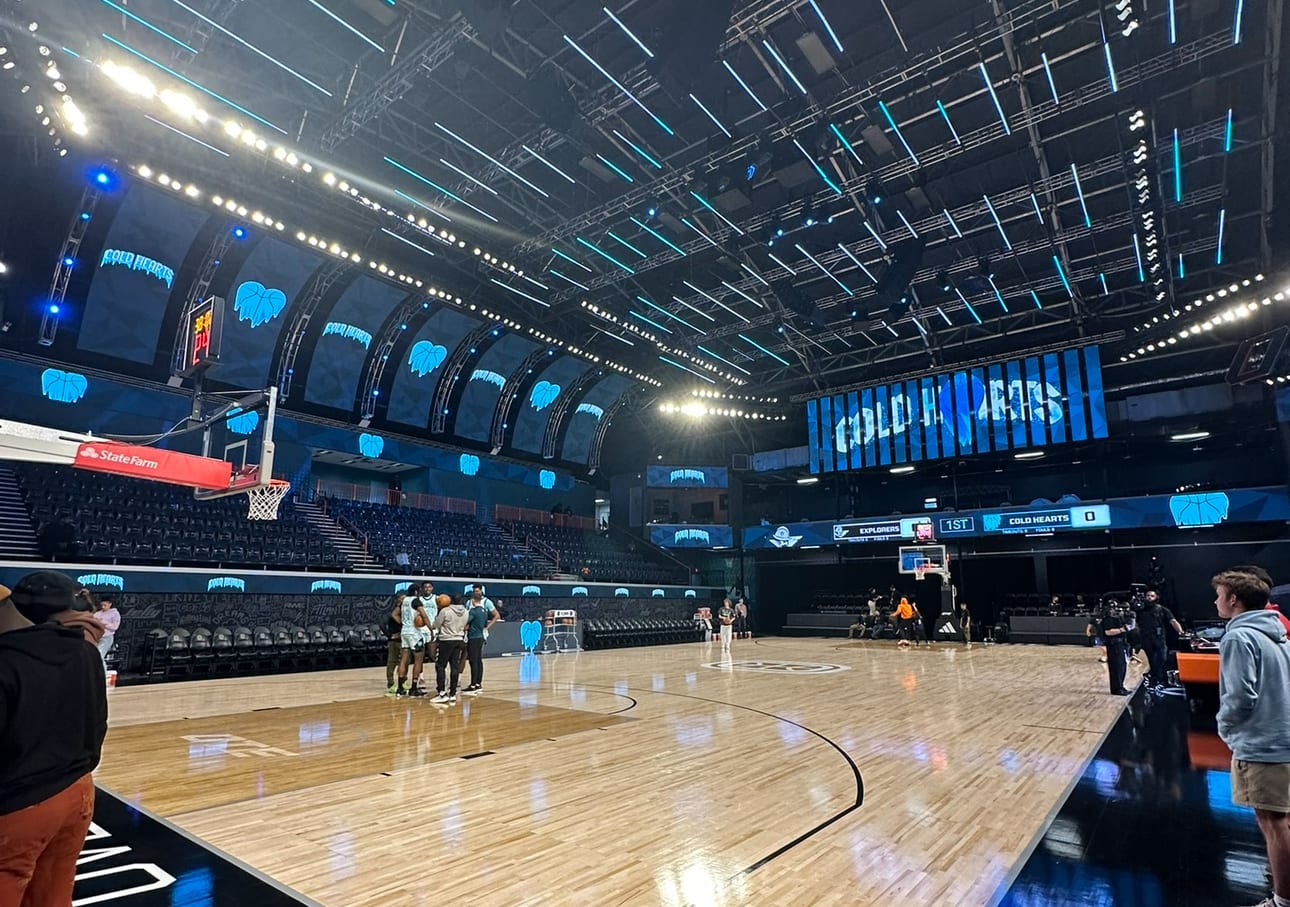Behind the Scenes: Breaking Down the Business Side of Overtime Elite

Before Overtime Elite, the broader sports media empire of Overtime was built. Focused on bringing fans instant content through the internet, it was truly a business that was ahead of the curve. The success of Overtime has given the relatively new league a high chance of being successful, while also being a key driver on the business side of things.
“One of our advantages and why I know we're going to be successful with this is that when we built this, we already had something like 50 million plus followers,” said Overtime’s Chief Content Officer Marc Kohn in an interview with Draft Digest. “We built the distribution system. We knew that whether it was on Instagram, whether it was on TikTok, whether it was on YouTube, whether it was on Twitter, we knew that we had an audience that liked a product like this.”
While the on-court product at OTE is obviously of extreme importance, the content generated is largely the driver that keeps the lights on. Marc Kohn is in charge of all original content for the next generation of fans following Overtime Elite. An experienced leader in the space, he’s been in sports media for over 20 years. He spent time at Bleacher Report and Barstool Sports before starting at Overtime nearly six years ago.
In this current role, Kohn leads many of the most important initiatives for both Overtime and the basketball league in Atlanta. The content team at Overtime is more than 100 people split between New York, Atlanta and Los Angeles, continuing to build enticing and interesting content in the sports world.
This side of the Overtime business really is the behind the scenes key for Overtime Elite that ensures the league itself is successful. Not only is the content that’s created the main lever that draws new fans to the league and its players, but it also acts as the driver for sponsorships, partners and advertisers. On all three fronts, companies can greatly benefit from being featured on the various Overtime platforms.
As it relates to Overtime Elite, the brand recognition realized by these businesses that sponsor and advertise with the league can be found both digitally and in the arena. For example, some of the top sponsors of the league today include State Farm, GMC, Gatorade and most recently Adidas.
For these brands and others to continue partnering with OTE, the product must also be compelling. This is where Kohn is able to leverage his expertise both in the digital space and live in-person at the facility.
With the social media boom over the last decade, sports media has changed drastically. It’s been something Kohn has been adjusting to with time and ensuring content continues to stay relevant and modern. This is where he leans on his team to ensure this is happening.
“Things have changed a lot. I spend countless hours on TikTok, right? Six hours a day, but still the best ideas should be coming from young people,” Kohn told Draft Digest.
The way content is consumed has fundamentally changed even in the last few years. Not only have social media platforms changed rapidly, but completely new applications and avenues have emerged.
“Unlike when I was young, when I had to go to Barnes and Noble and buy newspapers and magazines to find out what my peers were doing, we knew that this next generation of sports fan was on Instagram and Snapchat,” said Kohn. “So that there's just been this complete change in the consumption process.”
Overtime might be most known for the highlights and shorter content on social media, but there is just as much long-form content online that is published. Whether it’s a mini-series on a rising high school player, a movie documentary on Cade Cunningham or a behind the scenes interview with the tallest basketball player in the world, Overtime does it all.
In fact, this longer content is extremely interesting to the younger generations. While short-form content is wildly popular on platforms like TikTok, there’s still a craving from sports fans for long-form media.
“Now we're seeing another change in the consumption process,” Kohn said. “And that actually, everybody was wrong in thinking that younger people have shorter attention spans and won't watch things for long periods of time. Netflix proved that wrong years ago, but nobody wants to acknowledge that the next generation was willing to binge watch Netflix shows. They just didn't like how the cable system worked.”
To Kohn, the length of the content doesn’t necessarily matter. It’s all about understanding what the consumer wants and ensuring everything is interesting.
“My philosophy on content has always been that you should stop when it gets boring,” Kohn went on to say. “So we don’t have TV constraints of things having to be 30 minutes or an hour. If it's best at 12 minutes and 36 seconds, that's the piece. If it’s best at 31 minutes and 10 seconds, that’s how long.”
The more viewers that this content gets, the more revenue that is able to be generated for Overtime and in turn OTE as a league. Furthermore, how long viewers actually engage with the content plays a key role in advertising revenue, meaning the content needs to not only attract the audience, but also keep them there for as long as possible.
As it relates to OTE specifically, perhaps the most fascinating piece of content to date is the Amazon Prime documentary, One Shot: Overtime Elite. A six episode series, it gives you a behind the scenes look at what happens during the grind of a season at Overtime Elite, both on and off the court.
Amazon Prime is a partner of OTE and actually carries select live games as well. In general, the “Game of the Week” at 7:00 pm every Friday from opening night through the playoffs is carried on Amazon Prime. They also carry other special games along the way.
Outside of that, games are broadcast on YouTube, which is also a great option for Overtime to get more viewers on its channels. Upwards of a quarter million viewers tune into some of these games live and on replay, which speaks to just how popular this league has become.
The experience for watchers is unlike anything else in the world of basketball, especially for this level of play. It has a professional feel, with cameras sometimes in the huddles and even the locker rooms at halftime on occasion. Furthermore, players are interviewed live between quarters and at the end of games.
This is the vision for OTE and what fans can experience when watching these contests. It gives much more intimate access than nearly any other league.
“Could you imagine if in real time, you can hear the game winning play in the huddle and you knew where it was gonna go? You knew how the defense was going to play it and get into that moment like you're there,” Kohn said as he explained what makes OTE broadcasts special.
That’s the beauty of being an independent league. Overtime Elite is able to do things that most others cannot, given they get to make the rules. This provides the unique opportunity to rise above and make basketball games more entertaining than ever.
“That was one of the things where we could win,” Kohn went on to say. “We could bring people where the New England Patriots would never be able to, where the NBA never would never be able to, and there's reasons why. But for us to be able to in this league, and bring fans closer behind the scenes into spots where others could never go is amazing.”
As great as OTE’s digital experience is for fans around the world that engage with the content, there’s nothing like being in the facility live. From the arena itself to the atmosphere and overall setup, it’s special. There’s often NBA players and other celebrities in attendance at big games sitting courtside watching the competition.
Anytime buzz can be generated, it’s good for the league and for Overtime. This is an era in which hype drives the industry. When notable figures are in the arena, it’s well-documented and all over Overtime’s social platforms. This makes the event feel even bigger, drawing an audience which means more attention and interest.
The arena itself is one of the most eye-catching in the world, with every single discrete detail being considered when designing it. This process was something Kohn was heavily involved in, ensuring the arena was something that fans would see online and dream of one day seeing in person.
“I was part of the team that picked out where LED boards were going to go, the vision of making it [the arena] very futuristic and intentional,” Kohn told Draft Digest. “What I do every single day is compete for people scrolling on their phone, right? I have to make them stop. I have two simple things to do. I have to make people stop or click on my video, and then stay. If I do those two things, I'm successful. But if it just looked like a high school gym, or a lower level college arena, everyone would just flick by and be like, I have no idea what this thing is. When it's striking, super visual, colorful, pop, it makes people stop on their phone. And I knew that we had to make people stop on their phone. That was like the most important thing.”
The team at Overtime wanted to ensure this arena felt important. Everything about it had to feel like the best on the market. The atmosphere and physical structure of a sporting event can completely change the experience for the fan attending in person, or even watching online. The goal of this arena was to make it feel like one of the biggest sporting events you’ve ever attended. There was no doubt that the talent on the floor would result in exciting matchups, but the experience is more than what happens on the hardwood.
“To have something that is different and striking, and something that for the fans to be like, oh wow. You have to make it feel important. And it is important," Kohn said. "We knew we would have future NBA stars, but you have to make it feel big. We knew that there was an audience for this. We knew if we organized it right and gave it the proper touches, it would feel big time like the NBA playoff basketball that we all want.”
Whether you’re in the arena live or streaming any event online, it’s easy to see why some of the biggest companies in the world want to advertise with OTE. Something that is as visually appealing as this arena is makes it very attractive to want to be part of the experience.
From the massive jumbotron to the 420 LED screens that flip every few minutes, the arena clearly ended up turning out to be visually remarkable, but there’s deeper meaning to the way it was designed from a layout perspective. It’s meant to emulate some of the most historic outdoor courts at some of the most popular parks in the country. Kohn explained how the planning process for this arena really was intentional in making it feel like you’re at a place like Rucker Park.


“The stands don't go all the way up, right? Like you have a lower bowl and then separation,” said Kohn. “And the goal for that was that we wanted to encourage people to stand up for as much of the game. So like Dyckman or Rucker — the ability to encourage people to be able to stand up and then also have separation between each other, but keep that in an enclosed atmosphere, that tight atmosphere to make it a little more street.”
Not only are the stands and overall layout of the court meant to give this vibe, but there’s also smaller touches as well. For example, Bria Janelle is on the microphone talking throughout the games while on the court, making it feel even more like traditional street basketball.
“That's kind of a throwback into the New York City parks,” Kohn would go on to say. “You have like the overhang where people do standing room. There's that famous picture of Dr. J playing at Rucker Park, and people like on top of apartment buildings hanging over looking.”
Julius Erving has people sitting on schools and trees to watch him play at The Rucker!
— Timeless Sports (@timelesssports_) February 22, 2020
Happy birthday, Dr. J. 🎞 pic.twitter.com/EAnmCYSZ0P
What both the digital and in-person experience results in is a tremendous fanbase. In year one of OTE, that had not yet been established. It was a cool concept and people came to watch games, but they were cheering for big dunks and highlight plays rather than teams or individual players. That has fundamentally shifted more recently, as fans come in their favorite team’s gear and truly have a passion for that group of individuals winning.
It’s this fanbase that also propels the business side of OTE, which again is a byproduct of the social content, game broadcasts, narratives throughout the season and all of the stories told.
“How do you get more people to be the diehard fans, right? The more diehard fans we have, the more people who watch our games which helps propel the business. That’s how we get to the finish line,” Kohn explained. “It’s all putting ourselves in the shoes of what the fan wants. Everything that I think about is audience development, and how that is going to build more fandom and how I can make the broadcasts more entertaining.”
While most are familiar with what happens on Friday and Saturday nights in Atlanta, there’s much more behind the scenes with content, production and marketing that make Overtime Elite such a unique concept. This part of the operation is also key in ensuring the business side of the league is successful.
Want to join the discussion? Like Draft Digest on Facebook and follow us on Twitter to stay up to date on all the latest NBA Draft news. You can also meet the team behind the coverage.
